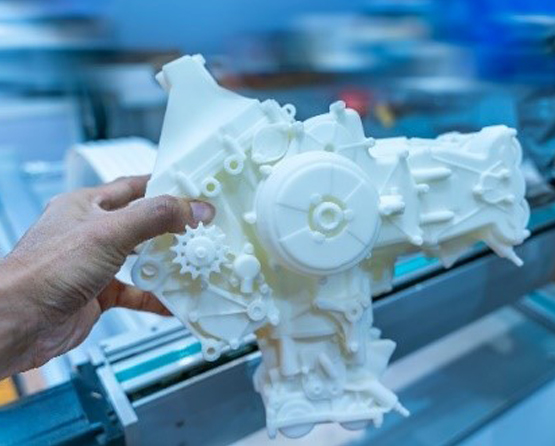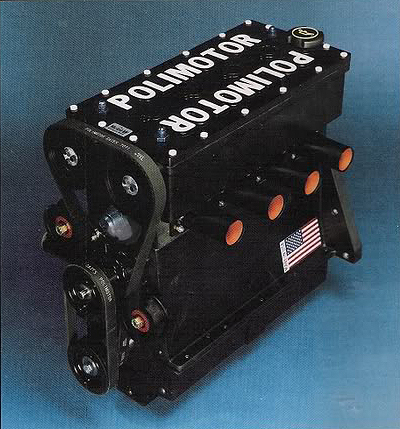POLYMER ENGINE

Ron’s expertise in dielectric elastomers and mechanical engineering has led to the development of multiple polymer engine designs. He has investigated the feasibility of using high temperature expanding gases to drive an electroactive polymer (EAP) element for producing electricity and mechanical power, as well as varying between the two. A proof-of-principle project showed that the polymers can operate using high temperature gases (~ 2,000C) where high efficiency is theoretically possible. Polymer engines do not burn up from brief exposure to hot gasses for the same reason metal engines don’t burn up… a solid material cools a thin boundry layer. Polymer engines have numerous potential advantages such as light weight, simplicity, quiet operation, low cost, and excellent design flexibility.
The project demonstrated that electroactive polymers could operate using high temperature combustion gases for extended periods of time and indicated that a polymer engine might be competitive with rechargeable batteries using as few as 5000 polymer engine cycles. The polymer itself is low cost enough to be disposable, although current data indicates that the polymer can survive for such long periods of time that it may be permanent. 3D printing of low-cost polymer engines is a realistic objective.
POLYMER ENGINES ARE REAL
In 1972, Matti Holtzberg established Polimotor Research to develop fiber reinforced polymers that could be used to replace metal parts in internal combustion engines. Ahead of its time in 1980, he successfully created Polimotor 1, the world’s first polymer engine.
Today the World’s first polymer engine is rapidly becoming the World’s first 3D printed metal and polymer engine.
Ron’s approach to polymer engine design uses elastomers such as silicone that, in addition to being light weight and low cost, enable the engine to expand and contract. If dielectric elastomers are used, the engine can also produce electricity directly.


Ron’s expertise in dielectric elastomers and mechanical engineering has led to the development of multiple polymer engine designs. He has investigated the feasibility of using high temperature expanding gases to drive an electroactive polymer (EAP) element for producing electricity and mechanical power, as well as varying between the two. A proof-of-principle project showed that the polymers can operate using high temperature gases (~ 2,000C) where high efficiency is theoretically possible. Polymer engines do not burn up from brief exposure to hot gasses for the same reason metal engines don’t burn up… a solid material cools a thin boundry layer. Polymer engines have numerous potential advantages such as light weight, simplicity, quiet operation, low cost, and excellent design flexibility.
The project demonstrated that electroactive polymers could operate using high temperature combustion gases for extended periods of time and indicated that a polymer engine might be competitive with rechargeable batteries using as few as 5000 polymer engine cycles. The polymer itself is low cost enough to be disposable, although current data indicates that the polymer can survive for such long periods of time that it may be permanent. 3D printing of low-cost polymer engines is a realistic objective.

POLYMER ENGINES ARE REAL
In 1972, Matti Holtzberg established Polimotor Research to develop fiber reinforced polymers that could be used to replace metal parts in internal combustion engines. Ahead of its time in 1980, he successfully created Polimotor 1, the world’s first polymer engine.
Today the World’s first polymer engine is rapidly becoming the World’s first 3D printed metal and polymer engine.
Ron’s approach to polymer engine design uses elastomers such as silicone that, in addition to being light weight and low cost, enable the engine to expand and contract. If Dielectric elastomers are used, the engine can also produce electricity directly.
